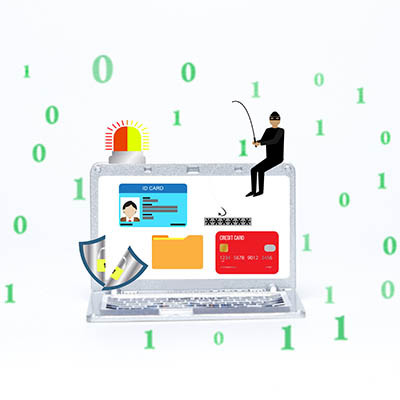Advanced Automation Blog
How to Reduce the Risks of Phishing Attacks
Phishing is a pervasive threat nowadays, with businesses of any size or industry serving as prime targets. Understanding phishing and implementing effective prevention strategies is crucial for your entire team.
Let's explore how to reduce the effectiveness of phishing schemes against your business—in other words, how to prevent phishing from having an impact.
Understanding Phishing and Its Impact on Businesses
Phishing is a cyberattack that involves tricking individuals into revealing sensitive information, like passwords, credit card numbers, or other confidential data. To accomplish this, phishers often pose as trustworthy entities to deceive their victims.
The impact a successful phishing attack can have on businesses can be severe, including:
- Financial loss
- Damage to reputation
- Loss of customer trust
- Legal consequences
The Various Forms of Phishing Attacks
Phishing threats and attacks come in many forms.
Email phishing is the most common, wherein attackers send fraudulent emails appearing to be from reputable sources.
Other forms include spear phishing, whaling, smishing, and vishing. Each method can target specific individuals or roles within a business, using personalized tactics to increase their chances of success.
The Cost of Falling Victim to Phishing
The cost of falling victim to phishing can be substantial. Financial losses alone can run into millions of dollars.
Beyond the immediate financial impact, businesses may suffer long-term damage to their reputation. Customers lose trust in businesses that fail to protect their data, which can lead to loss of business and reduced profits.
Key Strategies of Phishing Prevention for Businesses
Avoiding phishing requires a multi-faceted approach involving technical measures, employee education, and a security culture. These strategies can significantly reduce the risk of falling victim to phishing attacks.
Employee Education and Training
Employees need to understand what phishing is, how it works, and how to recognize it. As a result, one of the most effective defenses against phishing is education.
An employee's training should cover:
- Recognizing suspicious emails and messages
- Understanding the risks of clicking on unknown links
- The importance of reporting potential phishing attempts
Implementing Robust Email Filtering Systems
Email filtering systems can help prevent phishing emails from reaching employees.
These systems scan incoming emails for signs of phishing and block or quarantine suspicious emails. This reduces the chance of an employee falling for a phishing scam.
The Role of Multi-Factor Authentication
Multi-factor authentication (MFA) adds an extra layer of security by requiring users to provide two or more forms of identification before accessing sensitive information.
This makes it harder for phishers to gain access, even if they have obtained a user's password.
Regular Software and System Updates
Updating software and systems is crucial, as updates often include patches for security vulnerabilities that phishers could exploit. Regular updates can help protect your business from these threats.
Creating a Culture of Security
A culture of security encourages everyone in the organization to take cybersecurity seriously.
You must be confident that everyone is questioning suspicious requests and reporting potential phishing attempts.
Advanced Phishing Prevention Techniques
Beyond the basics, advanced techniques can further boost your defenses by improving your team's fraud awareness and adherence to best practices. These techniques can provide deeper insights into potential threats and help businesses stay ahead of evolving phishing tactics.
Simulated Phishing Tests
Simulated phishing tests are a proactive way to assess your organization's vulnerability.
These tests mimic phishing attacks, providing a safe way to gauge employee response. The results can inform future training and highlight areas for improvement.
Cybersecurity Policies and Frameworks
Cybersecurity policies and frameworks guide your phishing prevention efforts by providing a structured approach to managing cybersecurity risks.
Adopting frameworks like NIST or ISO 27001 can help ensure comprehensive coverage of potential vulnerabilities.
Building a Resilient Defense Against Phishing
Phishing prevention is not just about blocking attacks—it's also about building resilience to minimize damage if an attack succeeds.
This involves planning for incidents, backing up data, and ensuring legal compliance.
Incident Response Planning
An incident response plan outlines steps to take if a phishing attack is successful.
This plan helps businesses act quickly to contain and remediate damage. Having a plan in place can significantly reduce the impact of a phishing incident.
Data Backup and Recovery Strategies
Regular data backup is extremely helpful as part of your phishing preparations. In case of a successful attack, backups can help restore lost or compromised data.
A robust data recovery strategy can help businesses recover quickly from an attack, with added benefits for overall business continuity.
Legal Compliance and Data Protection
Compliance with data protection regulations is a key aspect of phishing prevention. Regulations, like the General Data Protection Regulation and California Consumer Protection Act, provide guidelines for protecting sensitive data.
Adherence to these regulations can help you avoid legal penalties and maintain customer trust.
Phishing Means Your Whole Team Needs to Commit to Maintaining Vigilance and Continuous Improvement
Phishing prevention is a continuous process, not a one-time task. It requires consistent effort and universal buy-in from everyone in your organization. While truly making phishing a "non-issue" may not be a realistic goal, following the strategies and cybersecurity tips outlined in this guide will allow you to prepare your team better to ensure a secure digital environment in the workplace.
We can help you accomplish this. Contact us to learn more about how we can help you fight against phishing. Call (770) 448-5400 today.



Comments